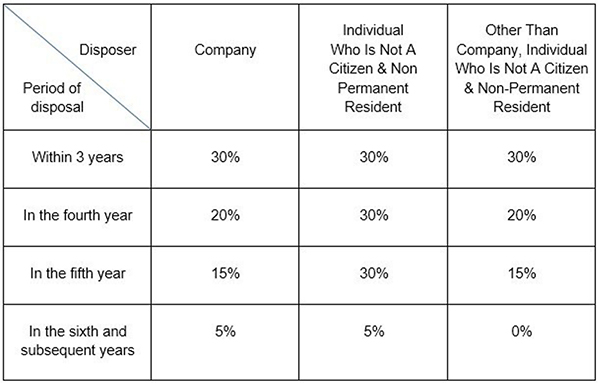‘In this world nothing can be said to be certain, except death and taxes.’ When a person passed on, the administrator/executor has to settle deceased person liabilities and taxes including Real Property Gains Tax (RPGT) before distributing the deceased person assets to the beneficiaries.
RPGT is a tax levied by the Inland Revenue Board (IRB) on the gains made from the difference between the disposal price and acquisition price of a property when a property owner disposes his/her portion of shares in the property.
With effect from 1 January 2014, the rates of RPGT are as follows:

In order to compute any RPGT payable on the disposal of a property, we have to determine the date of acquisition and the date of disposal. Generally, the date of acquisition is the date when the property was bought. However, this is not the case for the deceased person’s properties.
In the case of Kerajaan Malaysia v Yong Siew Choon (2006), the Federal Court stated that for the purpose of the taxes, an ‘executor’ means the executor, administrator or other person administering the deceased person estate. When the executor transfers a deceased person’s property to the beneficiaries, the disposal price is deemed to take place at the deceased person’s acquisition price, therefore no gain no loss transaction. On the other hand, the beneficiary is deemed to have acquired the property on the date of the transfer of ownership at the acquisition price equal to the market value of the property at that date.
However, if the executor sells the property to third parties, the executor is deemed to have acquired the property on the date of death at the acquisition price equal to the market value of the property the date of death. Therefore, the executor has to pay RPGT on the sale of the property based on the rates.
